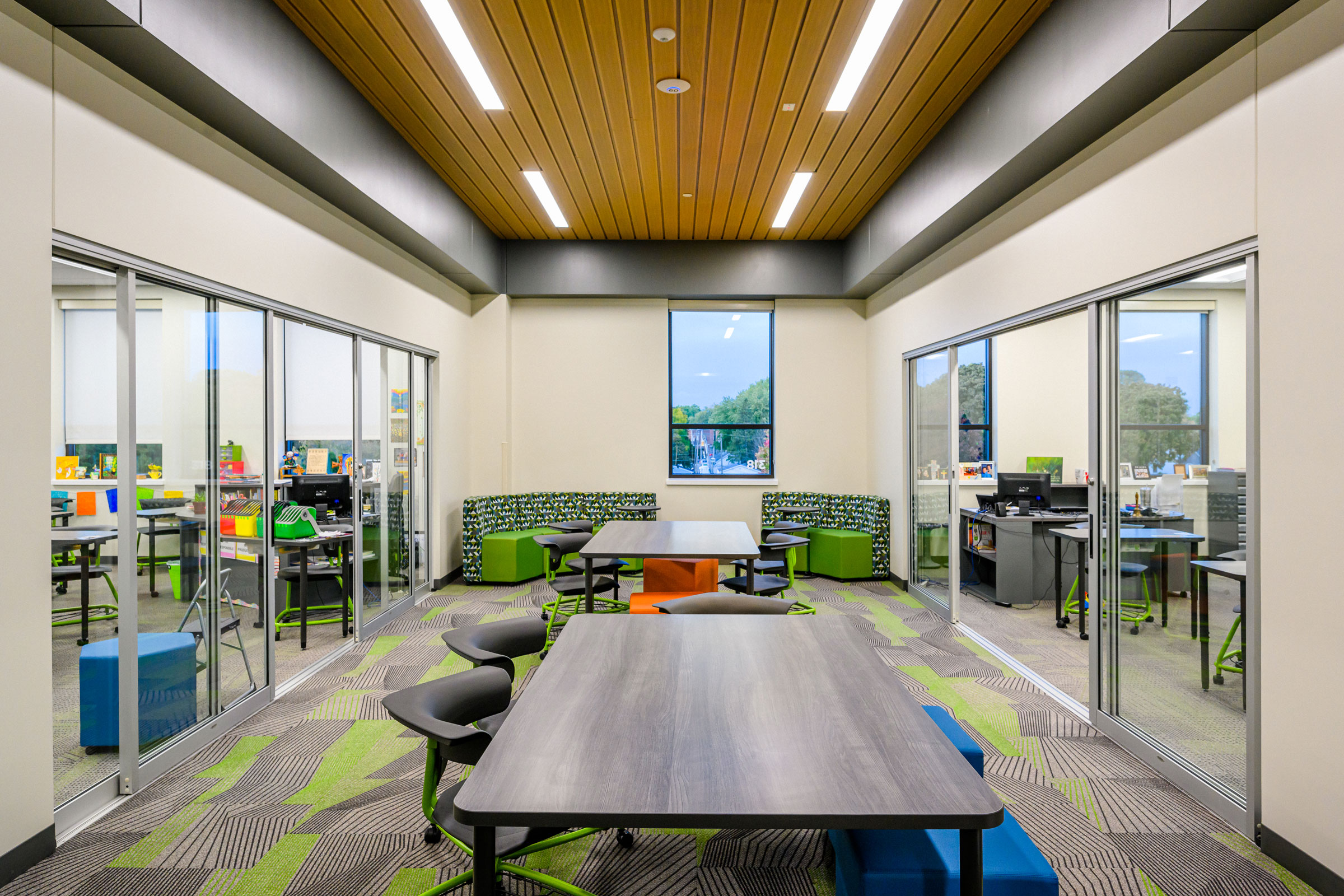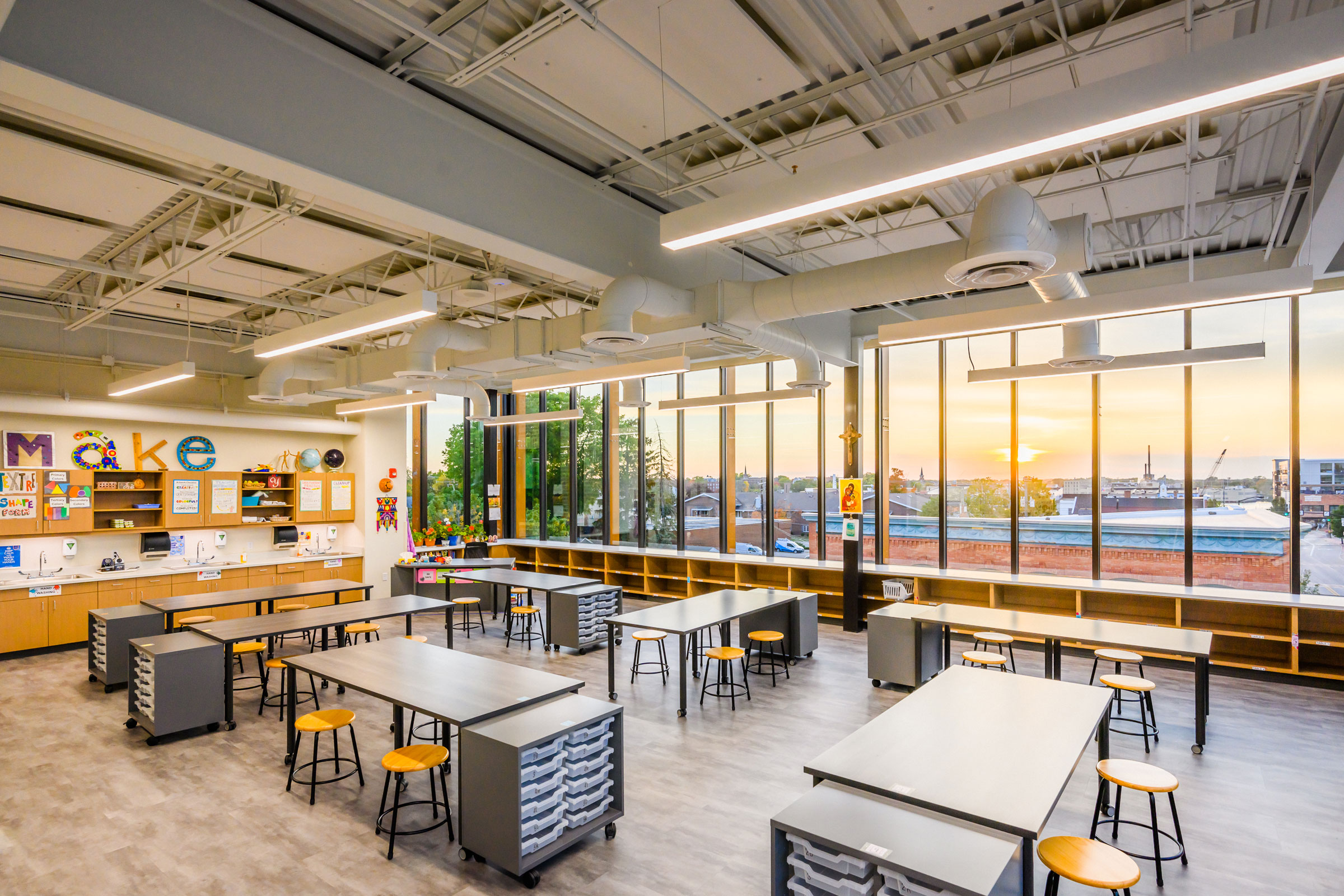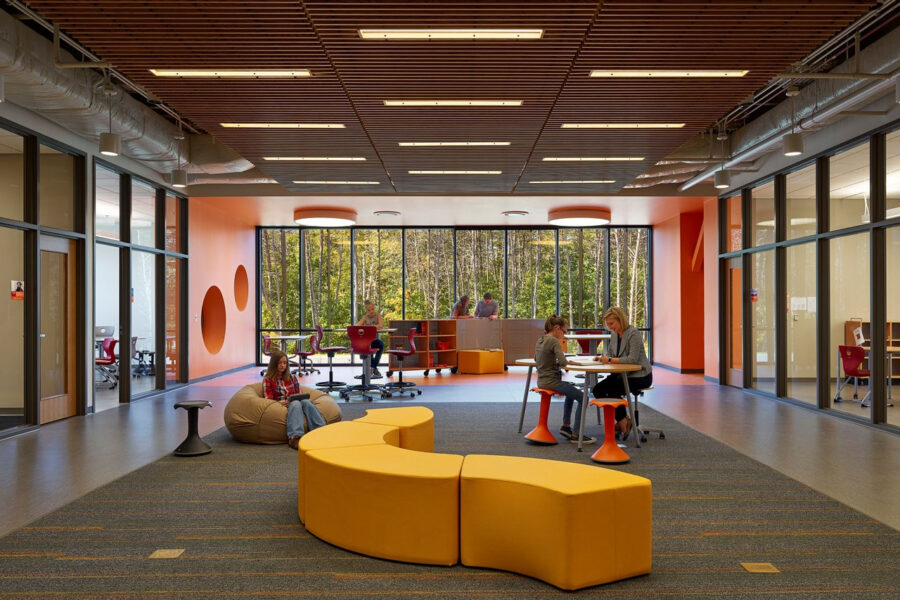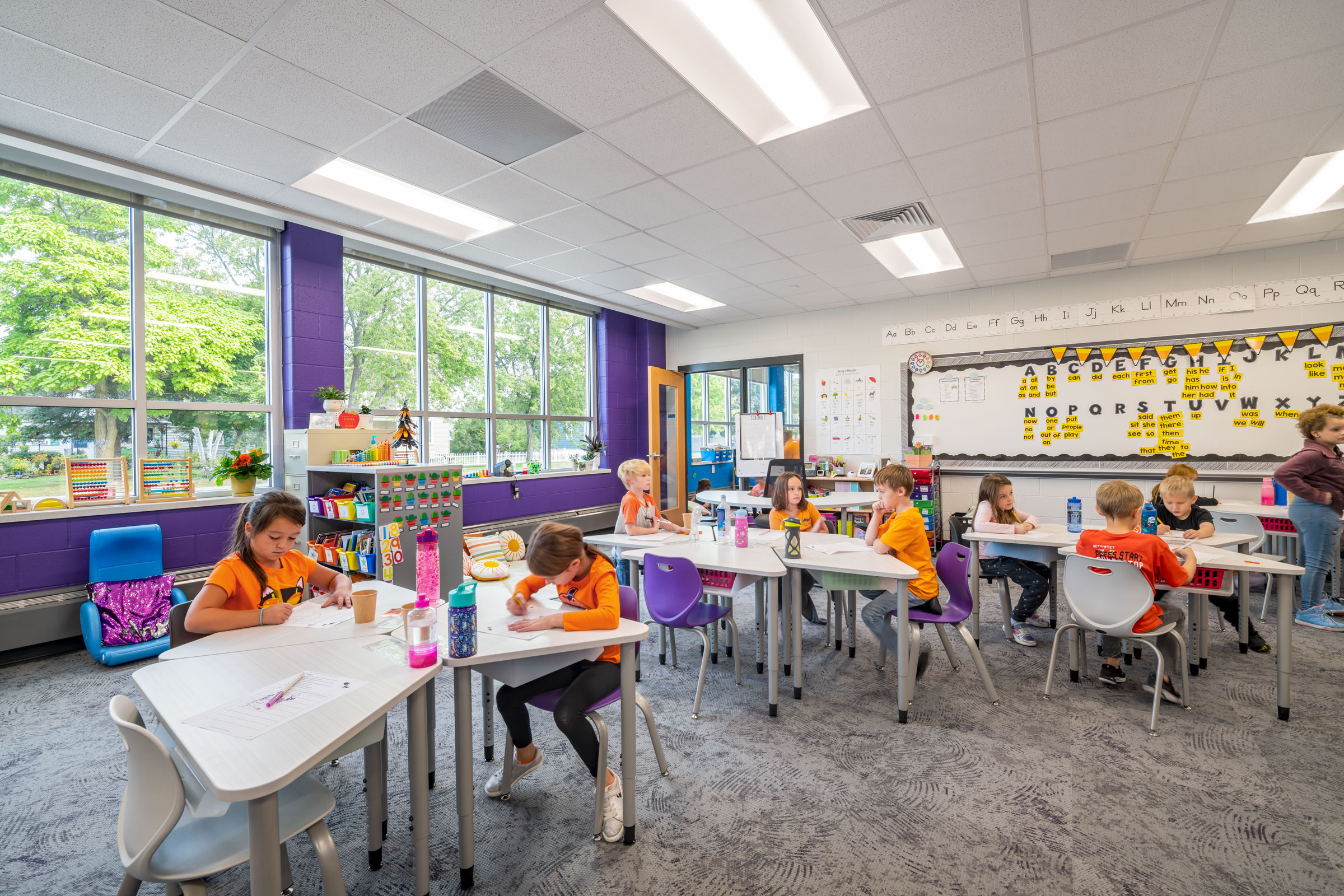Story at a glance:
- Less focus on teachers being the sage on the stage and more emphasis on active learning requires flexible and adaptable space and furniture.
- Classroom furniture that serves different functions allow schools to invest in furniture and classroom design knowing it’s not going to become obsolete in a few years.
- Research shows adaptable furniture solutions and letting students move around provides a positive increase in everything from participation to retention of learning.
Classroom design has evolved remarkably from the one-room schoolhouses of the late 18th century. Today, thanks to research, furniture manufacturers, interior designers, and forward-thinking administrators, classroom design and adaptable furniture solutions are creating opportunities that allow for stronger interpersonal communication and collaboration between students and their instructors.
In the past, 15 to 30 students would be seated in rows and staring at the teacher in front of the classroom, says Bryan Ballegeer, vice president of education markets at contract furniture manufacturer KI. Today there is less emphasis on teachers being the “sage on the stage” and more emphasis on active learning, which requires flexible and adaptable space and furniture, where students learn through hands-on projects or collaborative-based learning.
Teachers become facilitators of critical thinking, and flexible furniture and spaces allow them to interact with students with differing learning types.
Design Supported by Research

The Ruckus Chair supports students with a variety of learning needs. Photo courtesy of KI
Studies show well-designed school classrooms have a direct impact on learning outcomes. One study conducted at the University of Salford in the UK found that the confluence of classroom design features—like room orientation, HVAC, acoustics, and furniture—can enhance or set back a student’s academic progress by up to 25% during the course of a school year.
Architects and designers at Stantec frequently work with clients on the interior design of educational spaces from programming through construction. When the project includes specifying furniture, they consider a number of factors before making recommendations and taking into account the type of teaching that happens in a classroom and what children need to feel most comfortable learning.
One piece of furniture that is often part of the conversation is seating, and chairs like KI’s Ruckus are designed to keep students moving.
“KI has been at the forefront of chairs for classrooms that support all different types of postures,” says Katharine Land, a senior interior designer and associate with Stantec. “It’s a chair that’s non-directional with 360-degree seating options.”
Students can sit on the seat with their back against the chair with full back support, or they can sit sideways or perched on the back of the headrest. This helps improve sightlines in the classroom and ease engagements between students or between students and the teacher.
Land highlights how just one piece of furniture like the Ruckus chair can add great flexibility for students—and that it’s a good indicator of where the furniture industry is headed regarding classroom furniture. Having one piece that serves different functions allows schools and districts to invest in furniture and classroom design knowing it’s not going to become obsolete in a few years or if another teacher comes into a classroom and wants to switch up the layout. Other times new technology arrives, and the school may want the classroom design to adapt, too.

KI’s Ruckus Storage keeps what you need accessible but organized and is available in various heights and widths. Photo courtesy of KI
Furniture like the Ruckus chair also supports neurodiverse learners. Students learn in different ways, so being cognitive of where they sit in class, what they can see, and knowing they need different kinds of stimulus to learn are things design teams consider when designing a classroom and specifying furniture for their clients, according to Andrea Reay Wahl, interior design lead and associate at Stantec. Reay Wahl says they look at how the furniture might feel and how students might use each piece in different spaces. Some students like to keep their heads down and eyes closed because they’re audio learners, while visual learners may prefer to sit with their chest against a chair back for support, for example.

Furniture in this Stantec-designed Texas classroom at Richard J. Lee Elementary School is playful and flexible in design. Photo by Greg Folkins
“At first glance, it might appear they’re not listening,” Reay Wahl says. “No, they’re listening even more intently, because that’s how they need to learn.” Something as simple as a chair that allows them to move and do what they need to do to be able to grasp everything going on in the classroom can be a game-changer.

Color and flexibility dominate the design of this Stantec-designed space at Frederick County Middle School in Virginia. Photo by Tom Holdsworth
KI has also done extensive research on how furniture design can impact learning outcomes. That research helps show schools and decision-makers the importance of a thoughtful and strategic approach to this process.
Research shows that adaptable furniture solutions provide a positive increase in:
● Student participation and dynamic engagement: 32%
● Retention of learning and adds to student enjoyment: 32%
● Supports technology and lets students work comfortably with it: 36%
● Allows students to move however they want: 61%
● Helps students work in groups of varied sizes: 34%
The results were positive for students in all age levels and more pronounced among students in younger grades. The top driver in all age levels was the freedom to move.
KI’s education research extends into its annual Classroom Furniture Giveaway, which gives teachers across the US the opportunity to design and win the classroom of their dreams. Each year the winners provide before-and-after analyses to show how their new furniture solutions impact engagement and learning outcomes.
Sustainability Beyond Materials

KI offers a wide variety of tables for collaboration or individual work. Photo courtesy of KI
When Ballegeer and his team design furniture, they’re mindful of the wear and tear students and faculty put on each piece and know institutions typically update their spaces and furniture every 25 to 30 years. “The furniture has to stand the test of time, and that gets calculated into product design at the forefront,” he says. “How that is done is through our incredible design team, engineering team, as well as my team and our product team doing research and understanding user needs and by building that quality and durability at the forefront.”
The Ruckus chair comes with a lifetime warranty, as do many other KI furniture pieces. “We have that trust in our quality, which leads to furniture not just holding up but it’s also sustainable,” Ballegeer says. “It means it’s not going into landfills. You’re not having chairs break every three years.”
The company builds and manufactures most of its furniture in four plants in the US and one in Canada, reducing the travel footprint in North America and allowing for more control over the production process.
As classroom design continues to evolve KI is one manufacturer that plans to stay at the forefront of student- and teacher-centered furniture solutions. From continued research into the heart of what makes today’s classroom thrive to environmentally conscious design, manufacturing, and fulfillment, this dedication is critical to ensuring the success of teaching outcomes and a brighter future for all students.

